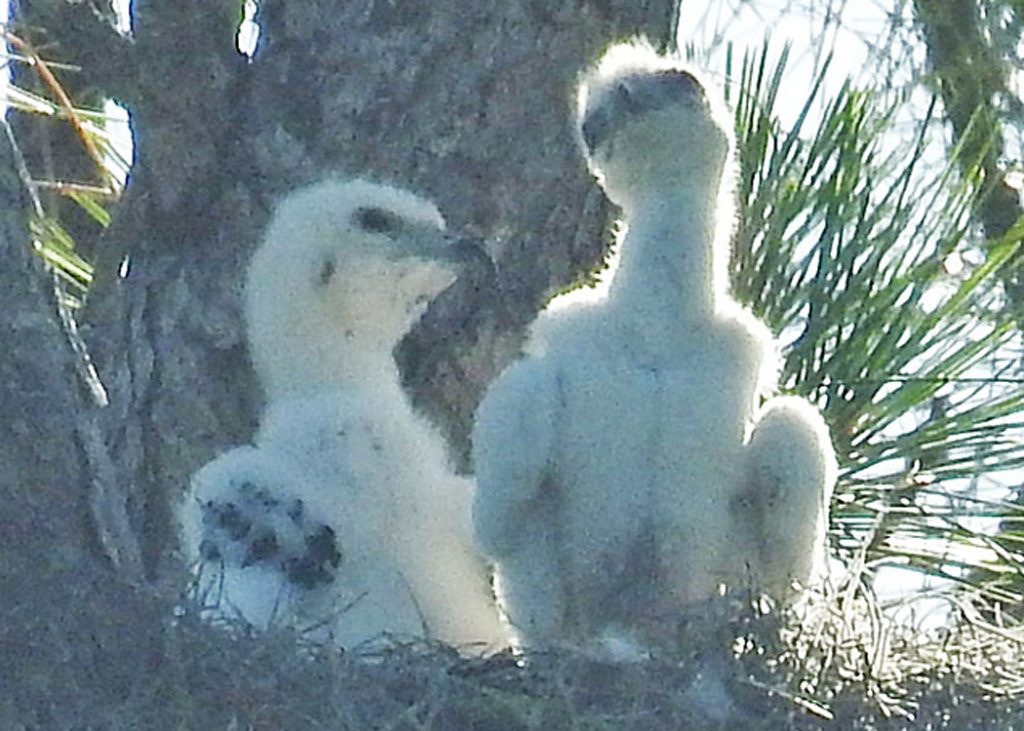By Allison Vincent – CREW Trust – 5/20/2022

SFWMD – Shredding at CREW Flint Pen Strand Trails
At first glance, shredding – or mechanically grinding a wider path – may seem like a drastic step in the wrong direction. Walking the uneven ground the land management machines leave in their wake, it’s easy to focus on the current destruction instead of the intended long-term benefits. So, give it some time, and much like the rest of the changes we’ve observed at CREW Flint Pen Strand Trails (FPS), this too will lead to a more environmentally resilient ecosystem.
Since its opening in 2018, we’ve seen remarkable changes at CREW Flint Pen Strand Trails as this newest network of trails has grown and evolved. We know that connecting four (including the CREW Bird Rookery Swamp) parking lots may seem like a bit much, and maybe it is, but what those connections create in terms of accessibility is truly great. A substantial part of land management is to ensure accessibility. This involves widening the trails to allow others to wage the never ending battle of keeping them trimmed and mowed. This in turn helps create firebreaks to contain inevitable outbreaks of fire and ensures that first responders can reach those in need.
One of the coolest things about the FPS trail system is the constant change that can be observed when we slow down long enough to pay attention to how the trails are always evolving. Return in ten years and you will likely find this trail system to have undergone the most changes of any within CREW. From the changes that wildfire brings, to the hydrologic restoration project, and the connection of the Purple Trail to CREW Bird Rookery Swamp, nothing ever stays the same at FPS!
FWC – Designated Trail maintenance at FPS
There are trails here for all levels of hikers and for every conceivable user group. Not unlike the waves of wading birds and alligators that populate FPS in all their wild ways; bikers, equestrians, long-distance hikers, wildflower seekers, photographers, birders, geo-cachers and hunters all flock to FPS.
We’ve intentionally kept the hunting area separate from the trails for all user groups to enjoy their chosen pursuit of nature to its fullest. Far ahead of the hunt season, CREW FWC biologists hang “Designated Hiking” signs with a different color/shape to designate the hunting trails from the CREW hiking trails; they update hunt brochure policy and survey the huntable area by swamp buggy to ready the lands for this active user group. That includes a whole lot of trail trimming work as these areas of CREW rarely see a vehicle.

SFWMD – Culvert installation at BRS
Future endeavors are on the horizon at CREW Bird Rookery Swamp Trail, which has experienced natural degradation over the course of its public access history. The trail itself is historically significant, as a former logging road used to haul out old-growth cypress. The second-growth trees we now enjoy surround the old logging tram, with some of its original construction.
It’s no wonder that some of the infrastructure has begun to crumble under the weight of bikers, hikers, bears, panthers and most significantly, land management trucks and heavy equipment. If you’ve hiked far enough, you’ve likely noticed the lack of trail upkeep on the far western banks of the trail. That’s simply because mowing contractors have not been able to traverse the broken down culverts desperately in need of replacement. That will all change in the coming months!
The diligent South Florida Water Management District personnel assigned to look after CREW, have purchased several huge new culverts to install before the rainy season kicks into high gear. You can expect to see a temporary closure of the tram section of the trail in the next few weeks so that SFWMD personnel and contractors can complete the project as quickly as possible. The portion of the trail to remain open will include the parking area and boardwalk.
In Sum
Keep an eye out for all these improvements by visiting CREW trail systems regularly. The CREW Land & Water Trust works to keep you informed about water and wildlife through guided walks, strolling science seminars, information kiosks and this series of blog posts. The hard work is handled by our partners, SFWMD and FWC, who keep our trails navigable and safe for humans and wildlife, and most importantly they protect and maintain our watershed. We owe them our thanks.










































